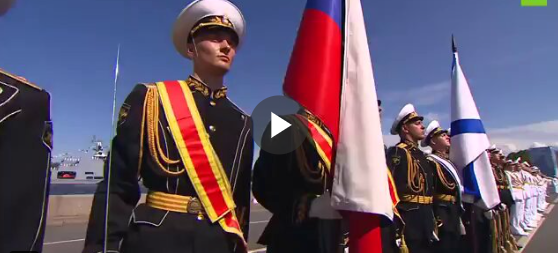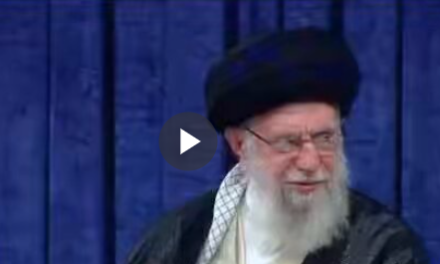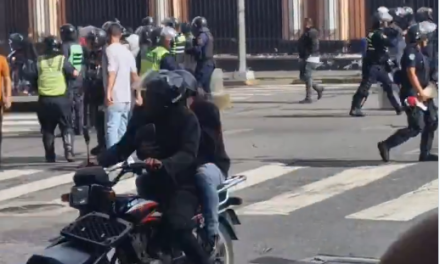The Democrat and Deep State game of ‘Let’s poke the bear’ continues. Flirting with disaster with a nation that has more nuclear weapons than the United States is pure lunacy. Except in Washington DC.
Russian President Vladimir Putin has issued a stark warning, signaling a potential escalation in military posturing. He declared that if the United States goes ahead with deploying long-range missiles in Germany, Russia will respond by positioning similar missiles that can reach Western targets.
Putin warns the US to not place long-range missiles in Germany.
Then Russia will be forced to target the Germans with similar missiles — even hypersonic ones, which will take 5 minutes to reach Berlin. pic.twitter.com/EM1OBbJ19g
— S.L. Kanthan (@Kanthan2030) July 28, 2024
This comes after Washington and Berlin recently announced plans to station these advanced weapons in Germany starting in 2026. The arsenal includes Tomahawk cruise missiles and cutting-edge hypersonic weapons, which, according to the White House, have a “significantly longer range than current land-based capabilities in Europe.” This move is intended to demonstrate the U.S.’s unwavering support for NATO and its European allies, amidst a backdrop of rising geopolitical tensions.
Putin, speaking on Russian Navy Day, accused the U.S. of ratcheting up tensions, stating, “We will respond in kind, taking into account the actions of the United States and its partners in Europe and beyond,” as reported by Reuters.
President Putin of Russia hints at the possible deployment of new strike weapons to counter the US plan of placing missiles in Germany. This follows after both nations expressed willingness to use weapons once prohibited under a Cold War treaty. 💥 #ArmsRace #ColdWarTension pic.twitter.com/hCe3sDDGk1
— Studio 7 (@Studio7VOA) July 29, 2024
The deployment signals a significant shift since the U.S. pulled out of the Intermediate-Range Nuclear Forces Treaty (INF) in 2019. This treaty, established in 1987, banned the use of ground-based missiles with ranges over 500 kilometers. The U.S. withdrawal was triggered by allegations that Russia had developed the 9M729 ground-launched cruise missile, known in NATO as the SSC-8, which was said to breach the treaty.
Following the withdrawal, former U.S. Secretary of Defense Mark Esper stated that the Department of Defense would pursue the development of these ground-launched conventional missiles. He characterized this as a “prudent response” to Russian actions and a critical component of the joint force’s broader strategy in conventional warfare.
🚨 Russian President Vladimir Putin Warns the United States of Cold War Missile Crisis
Russian President Vladimir Putin on Sunday warned the United States that if Washington deployed long-range missiles in Germany then Russia would station similar missiles in striking distance… pic.twitter.com/d68UwpSkre
— Trump Dayz (@TrumpDayz) July 28, 2024
The situation underscores an intensifying arms race, with both sides gearing up to expand their missile capabilities. This development not only raises the specter of a renewed arms race but also underscores the tenuous nature of international arms control agreements. As the U.S. and its NATO allies navigate this increasingly volatile security landscape, the potential for further military escalation looms ominously on the horizon.
Major Points:
- Russian President Vladimir Putin threatened a reciprocal response if the U.S. deploys long-range missiles in Germany, indicating Russia would position similar missiles within striking distance of the West.
- The U.S. and Germany announced the planned deployment of advanced weapons, including Tomahawk cruise missiles and hypersonic weapons, set to begin in 2026, signaling U.S. support for NATO.
- Putin accused the U.S. of escalating tensions, suggesting that Russia would respond to the U.S. and its allies’ actions globally.
- The U.S. previously withdrew from the Intermediate-Range Nuclear Forces Treaty in 2019, citing Russia’s alleged violation with the development of the 9M729 ground-launched cruise missile.
- The situation highlights growing military posturing and the potential for a renewed arms race between Russia and the West, emphasizing the fragility of international arms control agreements.
Fallon Jacobson – Reprinted with permission of Whatfinger News







